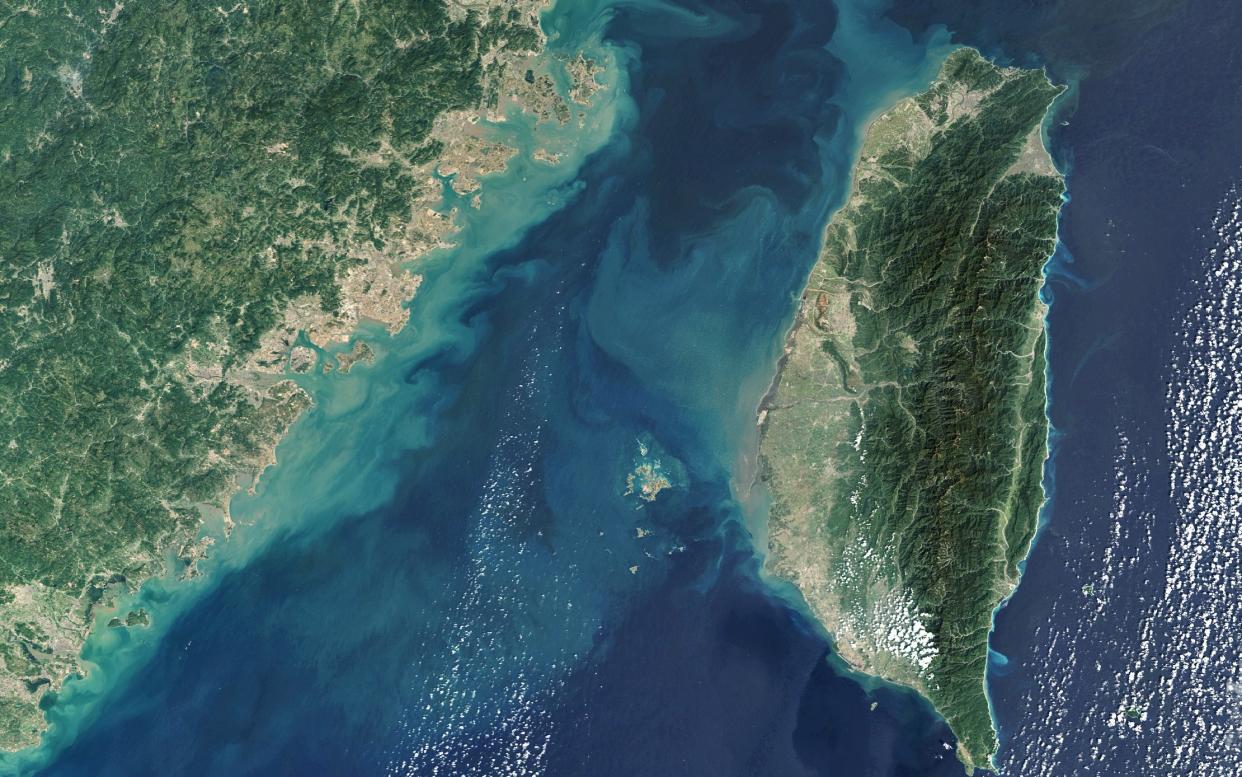Attack of the drones planned by both US and China at outbreak of Taiwan invasion

The US and China are wargaming a huge drone battle over the Pacific Ocean that would play out in the early hours of an invasion attempt on Taiwan.
Pentagon officials have drawn up plans to turn the Taiwan Strait into an “unmanned hellscape” that would delay Chinese forces until US reinforcements arrive.
US military strategists plan to use an army of air and sea drones to block ships and jets from China, while Beijing is building its own drones to intercept them.
The US has said it would defend Taiwan if China launches an invasion, which intelligence officials believe could take place before 2027.
China is thought to be planning a swift and overwhelming operation to take control of the country, which it claims as Chinese territory.
The Pentagon has launched a drone programme, codenamed Replicator, which aims to field thousands of drones that could slow down an invasion and allow the US navy and air force to come to Taiwan’s aid.
Adm Samuel Paparo, the commander of US Pacific forces, told The Washington Post that China would launch a “short, sharp war” that would take control of Taiwan “before the world can get their act together”.
He said the US has launched an operation called Hellscape that is hoped would delay the invasion by up to a month.
“I want to turn the Taiwan Strait into an unmanned hellscape using a number of classified capabilities, so that I can make their lives utterly miserable for a month, which buys me the time for the rest of everything,” he said.
The US admits that China has a “advantage in mass” through its navy, which surpassed the size of the American fleet more than three years ago, but hopes to overcome the difference in size through “strategic competition” in drone warfare.
The first drones from the Replicator programme, which was launched in August, have already arrived in the Pacific.
The cost of the programme is estimated at $1 billion (£790 million).
Most of the drones to be used in the American “swarm” are classified, but Kathleen Hicks, the deputy defence secretary, has said the fleet does include the Switchblade 600 – a model that has been effectively used in Ukraine to destroy armoured vehicles at a range of 23 miles.
Other drones will travel through the water, while a third category will focus on bringing down Chinese hostile aircraft and missiles.
Analysts linked to the Chinese People’s Liberation Army (PLA), say that China is already working on a plan to counter US drones and overcome American resistance to an invasion.
“The US should not forget that China has the world’s largest drone production capacity. We will also use many aerial robots to deal with our opponents,” said Fu Qianshao, a former equipment expert with the Chinese air force, told the South China Morning Post.
“The Americans should think about how to deal with a larger PLA drone fleet to counter them.
“The US can deploy thousands of drones to the Taiwan Strait, but the key is its air bases will be attacked, and we have a series of countermeasures, including electromagnetic interference or emerging interception methods.”
Earlier this week, Chinese military drones partially encircled Taiwan and last month China held wargames around the island.
Joe Biden, the US president, has said America would come to Taiwan’s aid in the event of an invasion, and has not ruled out putting US boots on the ground in the country.
Donald Trump, the Republican nominee in this year’s US election, has declined to say explicitly whether he would authorise the use of the American military if China invaded.
Although the PLA has been instructed to be ready for an invasion by 2027, some doubt that Beijing would take the decision to launch one after watching the fallout of the war in Ukraine.
Klaus Larres, a China expert at the Wilson Centre think tank, said Beijing could instead attempt to take the country peacefully.
“There are other means of putting pressure on Taiwan, like a blockade or economic pressure,” he told The Telegraph.
“What I read and hear is that the Chinese themselves are not necessarily very confident that they could succeed with a proper invasion.
“Invading an island is very different to conducting a territorial war, and so the gamble they would take by trying to do that could badly backfire.”

 Yahoo News
Yahoo News 
